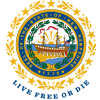Information Access for All
The NHCDD is dedicated to collaborating with NH entities to reduce barriers to accessing information. The NHCDD will use and support language which is culturally and linguistically competent and that is accessible via technology, plain language, e-content and interpreters.
If you would like to contribute to this resource list, please email Vanessa.A.Blais@DDC.NH.gov
-
Audio and Video Transcript Archive
-
What is accessibility and how do I practice it?
- Overview of Accessible Formats - Presented by Autistic Self Advocacy Network presentation slides
- https://rootedinrights.org/about/about/accessibility/
- https://aem.cast.org/
-
Plain Language
- Plain Language for Self-Advocates - Presented by Autistic Self Advocacy Network presentation slides
- Plain Language for Non-Profits/Government - Presented by Autistic Self Advocacy Network presentation slides
- IOD’s Accessibility Resources
- PlainLanguage.gov
- Plain Language Web Writing Tips checklist-for-Plain-Language-Web-writing
- Accessible PDF Techniques
- Tips for using plain language
- NCSC Interactive Plain Language Glossary - Use this new tool to encourage plain language when talking about courts and legal issues. Use the glossary to identify legal terms to use when communicating with the public. Forms, brochures, and other materials that incorporate plain language are provided as examples.
-
USCIS Plain Language
-
Easy Read
- Writing Easy Read Content - Presented by Autistic Self Advocacy Network presentation slides
- What is Easy Read?
- Easy read: making information accessible - Text description of video
- Easy Read Style Manual
- Easy Read Accessibility Toolkit
-
E-Content/Social Media
- Let’s Get Social! Ensuring that Social Media is Accessible to People with Disabilities
- Media Accessibility for Creators
- Introduction to Web Accessibility
- World Wide Web Consortium (W3C)
- Bitley - A URL shortener
- An alt Decision Tree This decision tree describes how to use the alt attribute of the <img> element in various situations.
- Web AIM Expanding the potential of the web for people with disabilities by empowering individuals and organizations to create accessible content. - WebAIM: Web Accessibility In Mind
- Accessible Social Media Toolkit
- https://alt-text-as-poetry.net/
- https://webaim.org/resources/contrastchecker/
- Bureau of Internet Accessibility
- Accessible Social
- Free Color Contrast Checker
-
Disability Language
- Disability Language Style Guide | National Center on Disability and Journalism (ncdj.org)
- I am Disabled: On Identity-First Versus People-First Language (thebodyisnotanapology.com)
- Identity-First Language - Autistic Self Advocacy Network (autisticadvocacy.org)
- Identity First vs Person First Language for Autism | Jenni Chapman | Ali and Jenni - YouTube - Transcript of Identity First vs Person First Language
- Conversations with Ivanova: People First and Identity First Language - YouTube - Transcript of Conversations with Ivanova
- Not Special Needs - YouTube NOT SPECIAL NEEDS | March 21 – World Down Syndrome Day | #NotSpecialNeeds - YouTube - Not Special Needs Transcript
- Special Needs vs Disabled? The “new” term to say instead of Special Needs. Special Needs vs Disabled? The "new" term to say instead of Special Needs. (adayinourshoes.com)
-
Trainings
- Rooted in Rights access trainings
- Information Access for All Basic Training with Jules Good from Neighborhood Access - Text description of this video
- Plain Language Academies
- GovLoop Academy
- Plain Language Getting Started or Brushing Up
- Little Red Cozette – four fun, short, easy to follow plain language training modules - Text description, Little Red Cozette 1
- Apps for Diverse Learners
-
ASL Interpreter Services
-
Get to Know These Organizations
-
Image Libraries



